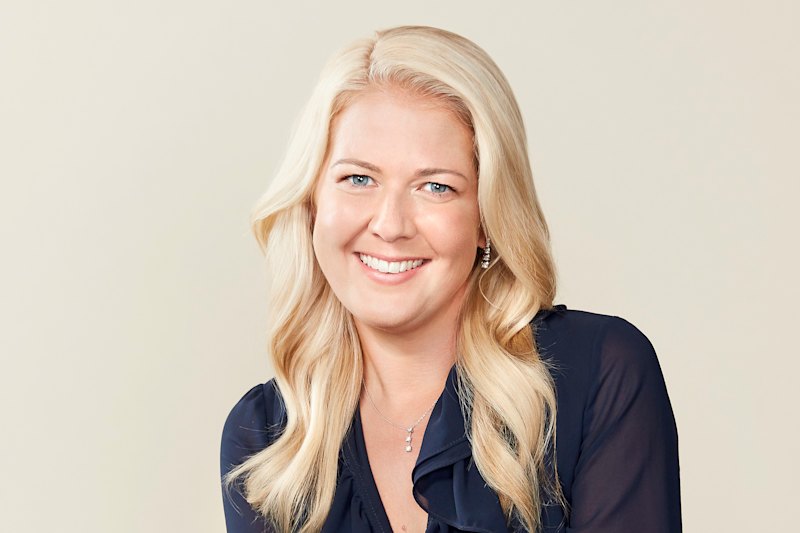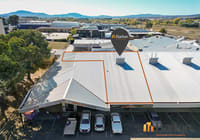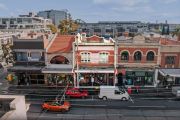
How logistics companies are dealing with the huge surge in online shopping
Hundreds of thousands of extra bottles of wine and other alcohol. Palettes of flat-pack furniture as far as the eye can see. Veritable mountains of perishable food.
With the explosion in the popularity of e-commerce and staggering rises in the volume, and changing nature, of the goods being ordered, comes fresh challenges for the distributors in industrial warehouses struggling to store, sort and deliver them.
Two years ago, multinational logistics, courier and package delivery company Aramex occupied 15,000 square metres of industrial space around Australia. Today, it has 24,000 square metres over 31 depots and delivered 37 million parcels in Australia last year.
“There are new challenges and difficulties to solve all the time,” said Aramex CEO Peter Lipinski. “One of the biggest has come with the more than 100 per cent increase March to August 2020 over the same period in 2019 of wine and alcohol deliveries.
“We do a lot of sorting manually, so we don’t get many breakages, but the big problem is multiple deliveries to units. The guys have to carry two to three cases of wine, which are heavy, and getting into some of the secure buildings can be hard. People are working from home, but they’re not always there.”
The enormous 93 per cent increase over 2020 in the volume of flat-pack furniture being bought online – desks, filing cabinets, chairs, cupboards, stools, beds – can also present issues, since it can be heavy and awkward to deliver. Over the six months from March to August 2020, there were 566,000 units delivered in that category alone.
Then there are the piles of perishable goods distributed by companies like DHL. When state borders suddenly snap close, and the number of flights coming and going from overseas is slashed, then the jeopardy escalates.
“We have a lot of perishable products, and if you don’t move them quickly, they go off,” said Denise McGrouther, managing director of DHL e-commerce Solutions Australia. “They take priority in the space we have available, but people are purchasing more … we can quickly build up a backlog, and the impact can be quite significant.”
In December 2020, Australia Post, which has an around 80 per cent share of the total delivery market, recorded the biggest month in its 211-year history, with more than 52 million parcels delivered, an almost 20 per cent increase on the previous year.
The company delivered over 7400 tonnes of airfreight, up 76 per cent compared to the same month in 2019, including more than 490 tonnes on the busiest night. Food and liquor were up by 50 per cent, fashion by 37 per cent and home and garden products by 36 per cent, year on year.
Ben Franzi, Australia Post’s general manager parcel and express services, says e-commerce growth during lockdown periods can hit 120 per cent, and non-lockdown growth has been 35 to 45 per cent, compared to pre-COVID growth rates of 15-20 per cent.
“During lockdown, everyone goes into a degree of panic-buying, as we saw with toilet paper and nappies in the supermarkets,” he said. “But this February, nationally, we’ve been 35-45 per cent up on February last year.”
The biggest challenge for Australia Post has also been the lack of flights around the country, in addition to new social distancing requirements, with workers on processing plants having to be spaced further apart. As a result, they’ve taken much more industrial warehouse space to cope with the increasing volume of product, with 50 extra pop-up sites, as well as 5000 more casual workers and 2000 posties transferred from bikes to vans.
An escalating trend
The constant demand for more space is spurring companies like Frasers Property to supply more. The latest project to begin construction is the $300-million Vantage Yatala estate in South East Queensland, midway between the Brisbane CBD and the Gold Coast, scheduled for stage one completion in September.
Ian Barter, general manager north region for Frasers Property Industrial, said: “Definitely the boom in e-commerce and online shopping has increased demand and we’re also seeing strong demand from the warehousing and logistics sector, where people are holding onto more stock, and light manufacturing. COVID has really escalated some of the trends – like e-commerce – we were seeing.”
That increase in e-commerce quantities is simply astounding. In Victoria, bolstered by the COVID lockdowns, online sales are up by 90 per cent plus from March 2020. In NSW, they’re up by more than 50 per cent. And the trend shows no sign of slowing.
For Aramex, deliveries in January 2021 were 40 per higher than the same month 2020, and February up by 52 per cent over last year. “It shows e-commerce is here to stay and a lot more retailers are now looking at how to combine bricks and mortar with online sales, ” Mr Lipinski said.
“We’re even now seeing shopping centres start developing into delivery hubs as well, using some of their spare capacity.”
The company has seen the number of games and toys being ordered leap by 105 per cent, presumably driven by the need to entertain kids at home during restrictions, fashion items by 50 per cent, and pet food by 45 per cent. Producers have responded by making tougher packaging to avoid tears and leaks during deliveries and designing easier-to-carry loads.
As a company delivering to, and from, overseas, and which doesn’t deliver alcohol, DHL eCommerce has seen other goods become more popular. Kitchen and home-cooking equipment has increased, with people fending for themselves at home more, while a spike in demand for protein powders could mean people are working out more – or thinking about it.
Alongside that has been a sharp rise in gym equipment deliveries (ditto), tooth-whitening powders and triple-digit growth in pet products. “From March-April last year, we’ve seen some of the biggest growth in volumes of deliveries we’ve ever had,” said Ms McGrouther.
“But we believe this will stay even post-COVID as online buying becomes the new norm.”










